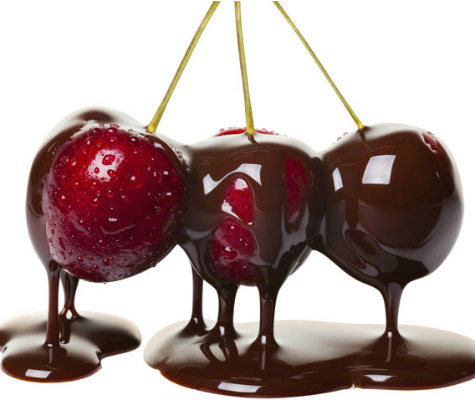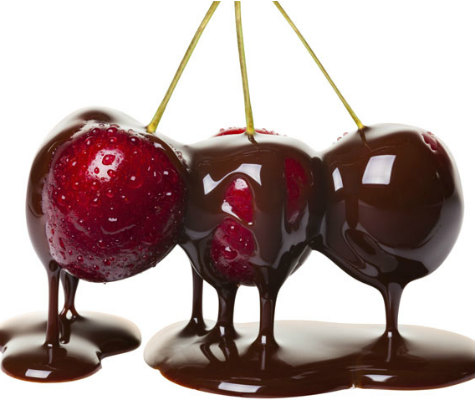The Best Whiskey Infusions You Can Make
Admittedly, I'm a purist. When I sit down at the bar and order a whiskey, a good bartender always asks how I want it. On the rocks? A splash of water? Chilled? These are reasonable questions to which I usually respond, "Pour it just the way God made it." I generally go for the American varieties — bourbon, Tennessee, or rye — and I prefer it unadorned. It's a difficult thing to improve upon, so I generally choose not to mess with perfection. That is, until I discovered the art of infusion.
The Best Whiskey Infusions You Can Make (Slideshow)
You may be pretty used to infusions, at least the commercial versions, when it comes to vodka. We've been drinking flavored vodka for decades now in this country, and it makes good sense — vodka is the blank slate of liquor. You can make it taste like pretty much anything. Whiskey is another matter entirely. Bestowed with distinct flavor profiles, whiskey infusing can be a bit trickier.
First, you want to think about the way your whiskey already tastes, the notes you pick up on your palette when drinking it straight. The goal in infusion isn't to mask the flavor of your whiskey, but rather to complement it. American whiskey is certainly a wonderful thing on its own — sweet without being saccharine, smokey without the bitterness of charcoal and peat, and spiced without tasting of potpourri. Therefore, you should work within that family of flavors: honey, autumn spices, smoke, vanilla, caramel, pie fruits, astringent herbs, nuts, and heat.
Next, you'll want to get to know the specific whiskey you'll be infusing. (For the purposes of this article, we'll be working with American whiskeys, but you can certainly infuse Scotch, Canadian or Irish whiskies using the same general principles.) While infusing vodka requires only mid-shelf liquor to get a good result, I've found that the better the whiskey, the better the infusion. That said, standard top shelf bar stock ought to do; leave the small batch and special production stuff alone unless you've got money to burn. In addition, even though two different bottles might be labeled as bourbon, it's important to know that no two distilleries are alike. While you're going to want to become intimate with whatever specific bottle you choose, there are some general rules when it comes to the flavor profiles of the three different major categories of American whiskey:
• Bourbon tends to be the sweetest of the bunch. It usually boasts the heaviest body, and the smoothest mouthfeel. Contrary to popular belief, bourbon does not necessarily need to be produced in Kentucky, but merely has to adhere to the legal specifications for distillation. The older the bourbon, the smoother it goes down. Great choices for infusion are Maker's Mark, Woodford Reserve, Knob Creek, and Eagle Rare.
• When I say Tennessee whiskey, I'm really just saying Jack Daniel's (there's good old George Dickel out there, but he's just an imitator as far as I'm concerned). Jack is my regular drink of choice, and one really needs to look no further than Old No. 7. There's an ongoing debate among whiskey-philes as to Jack's claim that it's a separate beast from its close cousin, bourbon. Many will say that the extra distillation step Jack Daniel's employs, known as "The Lincoln County Process," doesn't do a whole lot to distinguish Tennessee whiskey from bourbon, flavor-wise. After an extensive, decades-long study on the matter, I personally beg to differ. Of course, they're very similar, but I tend to find Jack to be slightly less sweet and lighter in body than, say, Maker's Mark, which can feel a little lugubrious on the palette. Jack also tastes slightly more astringent than bourbon, taking to herbal and savory infusions better.
• Rye is America's first whiskey, distilled by George Washington himself, and is the edgiest of the bunch. Whereas bourbon and Tennessee whiskeys are sweet and smooth, rye comes at you with more spice, body, and kick. It also displays the most flavor diversity out of the three major categories; one rye is definitely not like another. Out of fashion since Prohibition, the last few years has seen a surge in rye production, and for good reason. This rediscovered treasure is worth keeping in your liquor cabinet. Bulleit makes the most widely produced rye, and is perfect for infusing. If you want to drop a few more bucks, try Templeton, Van Winkle, 1776, or Michter's. They all offer something a little different from each other, and the experimentation is worth your effort.
Finally, you're going to need some simple equipment to do this right.
• Clean, one-quart Mason jars with lids. While you can infuse whatever amount of whiskey you like, the following recipes are proportioned for a quart of whiskey. However much or little you decide to infuse, always use a wide-mouthed, sealable, and airtight container, and always sterilize it with boiling water first.
• A sharp knife, and a good peeler.
• A fine mesh strainer.
• Medium to large unbleached coffee filters.
• Depending on the infusion, a good, heavy-bottomed skillet or saucepan.
Take a look at these recipes for good ideas and basic techniques to get you started infusing your whiskey, but don't be beholden to the directions or ingredients as written. Infusing whiskey to your liking is a process of experimentation, and there's no one right way to do it. The longer they sit, the stronger the infusion is, so make sure always taste them as they steep, and pull them when you feel like they're done.
The Chocolate Covered Cherry Whiskey Infusion
Decadent and sweet, but with a hint of tart, this infusion drinks beautifully on its own as an aperitif, or mixed in as the base of a dessert cocktail. Try adding an ounce of Godiva white chocolate liqueur, and an ounce of heavy cream, shaken and poured over ice.
Click here for The Chocolate Covered Cherry Whiskey Infusion Recipe
The Texas Cowboy Whiskey Infusion
I like to imagine a couple of old, windblown fence-riders carrying this spicy infusion along the border in their saddlebags. Depending on how spicy you care to make it, you can remove the seeds for a mellower heat. It's perfect on its own, or if you want to mix with it, try adding a half-ounce of homemade sour mix (lemon and lime juice, and simple syrup), and a dash of grapefruit bitters for a fiery whiskey sour.

